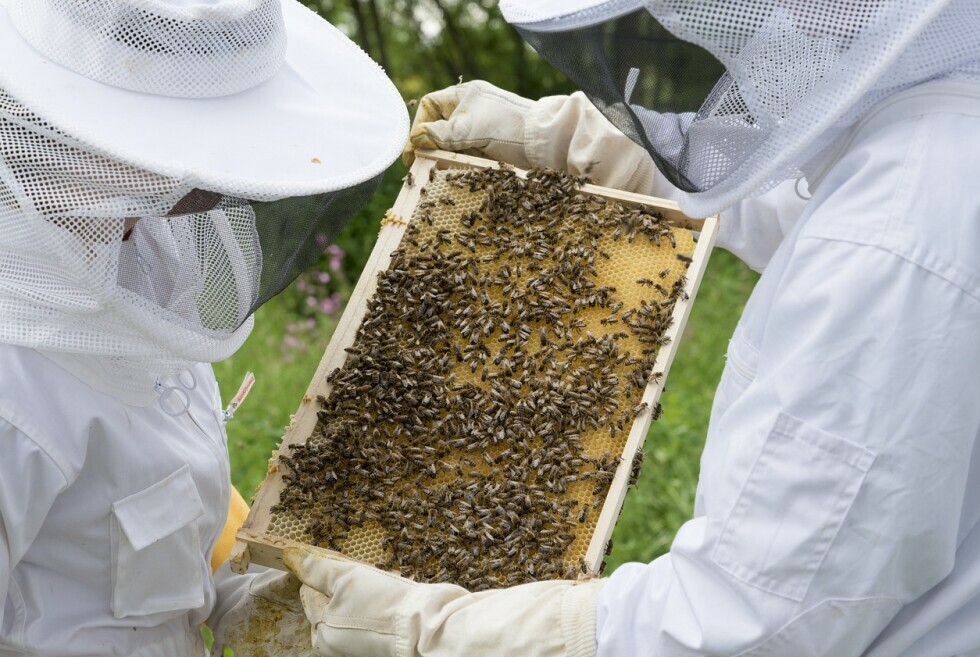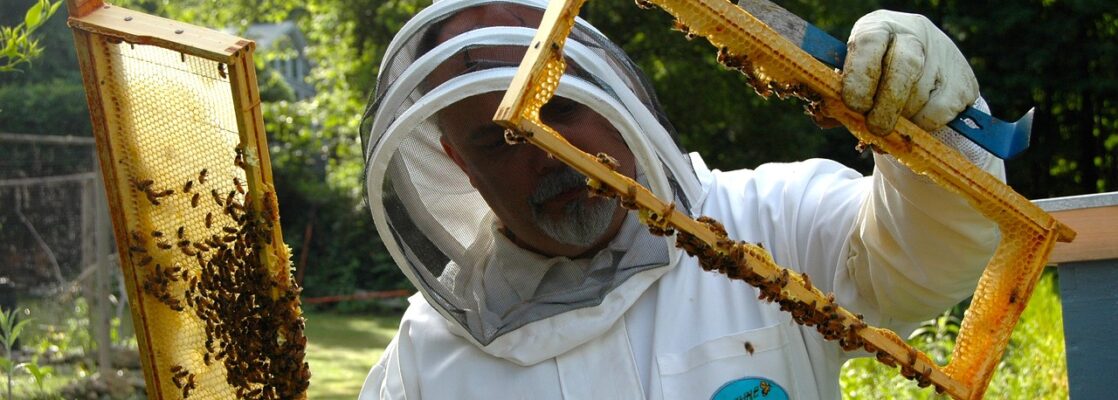I’m going to take you through the captivating world of backyard beekeeping. Think of it as your chance to make a personal impact on our environment while indulging in a hobby that’s as sweet as the honey it produces. You’re going to find out about the perks of keeping these incredible pollinators right in your own backyard.
This isn’t just about producing your own jar of honey; it’s also about contributing to biodiversity and enjoying how bees functions. It is fascinating how they know to do what they do. But like any great endeavor, you’ll face some challenges that can seem as tricky as a bee’s waggle dance.
Don’t worry too much about the bumps along the way. I’m here to help you navigate common issues like pests and climate effects, ensuring your bees thrive. In my opinion, a solid foundation of knowledge is your best tool for overcoming these obstacles.
If you’re excited to don that beekeeper suit and start your hive, remember to begin with the essentials: understanding your adversaries. Now, let’s transition seamlessly into discussing those pesky threats you’ll need to manage – the various pests that could challenge the resilience of your buzzing backyard friends.
Understanding and Mitigating Pest Threats
Now, if you’re serious about keeping your bees buzzing with health, you’re going to need to face the reality of pests. These unwanted visitors include the infamous Varroa mite, sneaky wax moths, and destructive hive beetles. They can wreak havoc on your colonies if left unchecked.
Maintaining hive hygiene is non-negotiable. Regular inspections allow you to spot trouble early and take action. And remember, strong colonies are your BEST defense. A thriving bee community is much more capable of fending off pests.

Regular tests to see where the mite levels are throughout the year is your best bet. You do not want to wait until the end of the season before you do this. The reason is because you will not know how long those mites have been wreaking havoc!
For Varroa mites, treatments like formic or oxalic acid can be effective. Essential oils, such as thymol, also show promise in keeping mite numbers down. If mechanical control is more your style, screened bottom boards can help reduce mite populations.
Now, after you’ve protected your hives from these critters, you’ll need to think about the broader picture. Like us, bees are affected by their environment, particularly the weather. That’s the next challenge on the list, and it’s a big one. Let’s head over there to continue our beekeeping journey.
Coping with Climate and Weather Related Challenges
You’re going to find out about how the weather can throw a curveball in the life of a backyard beekeeper. Extreme temperatures, heavy rainfall, or prolonged draughts – bees feel it all. It’s pretty clear that bees, much like humans, need a comfortable living environment to thrive.
Adapting your beekeeping strategies as the seasons change is crucial. For example, during a scorching summer, your bees need ventilation and water to prevent overheating. In contrast, during winter, ventilation is also key. Moisture is one of the main killers of bees in the winter. Also, keeping the hive entrance clear of snow and ice helps your bees during those lean months when they need to take occasional cleansing flights.

Defensive measures against severe weather conditions are not just about enduring the elements; it involves active engagement. Monitoring your hives regularly and being ready to respond with adjustments is imperative. Have you ever considered a windbreak to shield your hives from gale-force winds? What about an elevated stand to avoid flooding? These can make a real difference.
Moving smoothly into ensuring your bees’ health and nutrition, it becomes apparent that what bees eat and their overall health status are intimately connected. If extreme weather disrupts the availability of forage, it’s your job to step in. Sugar water and pollen patties are a great source of food.
In the spring, a ratio of 1:1 is helpful of sugar and water. Whereas, in the fall you’ll want to add two cups of sugar to one cup of water. Just remember, in the winter months, it’s best to leave the bees alone as they are clustering around the queen bee to keep her warm as well as themselves.
Resilience in the face of adverse weather is paramount. But it’s not just about braving the storm; it’s about preparing your bees to come out stronger on the other side. Stay tuned as I lead you into the next vital section on bee health and nutrition.
Advanced Beekeeping: Expanding and Sustaining Your Apiary
Once you’ve tackled the initial challenges of backyard beekeeping and have a flourishing colony, you might be thinking about expanding your apiary. This isn’t just about adding more hives, it’s also about ensuring you can maintain a sustainable practice that benefits the environment as much as your personal enjoyment.
In my opinion, expanding should be done thoughtfully. Choose something that resonates with you and fits your capabilities. You don’t want to grow too quickly and struggle to manage the health of multiple hives. A lot is happening very quickly in your hives, and keeping on top of it is crucial.
Sustainability is huge in beekeeping. It means more than just the survival of your own colony—it’s about making sure that your practices contribute positively to the local ecosystem. This includes selecting the right location for additional hives, ensuring ample forage for your bees, and practicing responsible pest management.

When it comes to community involvement, there’s a lot of opportunity in networking with other beekeepers and enthusiasts. You’re going to find out about sharing knowledge, swapping tips, and maybe even assisting each other during peak seasons. Building community is part of the joy of beekeeping.
I really hope that you find as much satisfaction in expanding your beekeeping ventures as I do. Beekeeping is not just a hobby—it’s a lifelong learning experience that keeps giving back. Remember, your first attempt doesn’t need to be your last. You can always learn more and try again but learning from your mistakes is key!

2 comments on “Common Challenges And How To Overcome Them In Backyard Beekeeping”
Ray
July 17, 2024 at 4:59 amAbsolutely love this article! The advice on coping with climate and weather-related challenges is also invaluable. It’s clear that providing proper ventilation during extreme temperatures and ensuring hive entrances are clear in winter are essential for bee health. As a beginner, I’m really excited to dive into backyard beekeeping. I appreciate the detailed explanation about dealing with Varroa mites using treatments like formic or oxalic acid. However, I’m a bit concerned about the emphasis on regular inspections and maintaining hive hygiene. As someone just starting out, how often should these inspections be done without disturbing the bees too much?
Randi
August 2, 2024 at 4:24 amThank you for your kind words! I’m glad you found the article helpful. It’s exciting to hear about your enthusiasm for backyard beekeeping. Regular inspections are crucial, especially for beginners, to ensure the health of your hive and to catch any issues early. I recommend starting with inspections every 7-10 days during the active seasons (spring and summer) when bees are most active and conditions change rapidly. This frequency allows you to monitor for pests like Varroa mites and maintain hive hygiene without overly disturbing the bees. As you become more experienced and confident, you may find you can adjust the frequency based on the needs of your hive and local conditions. Happy beekeeping!